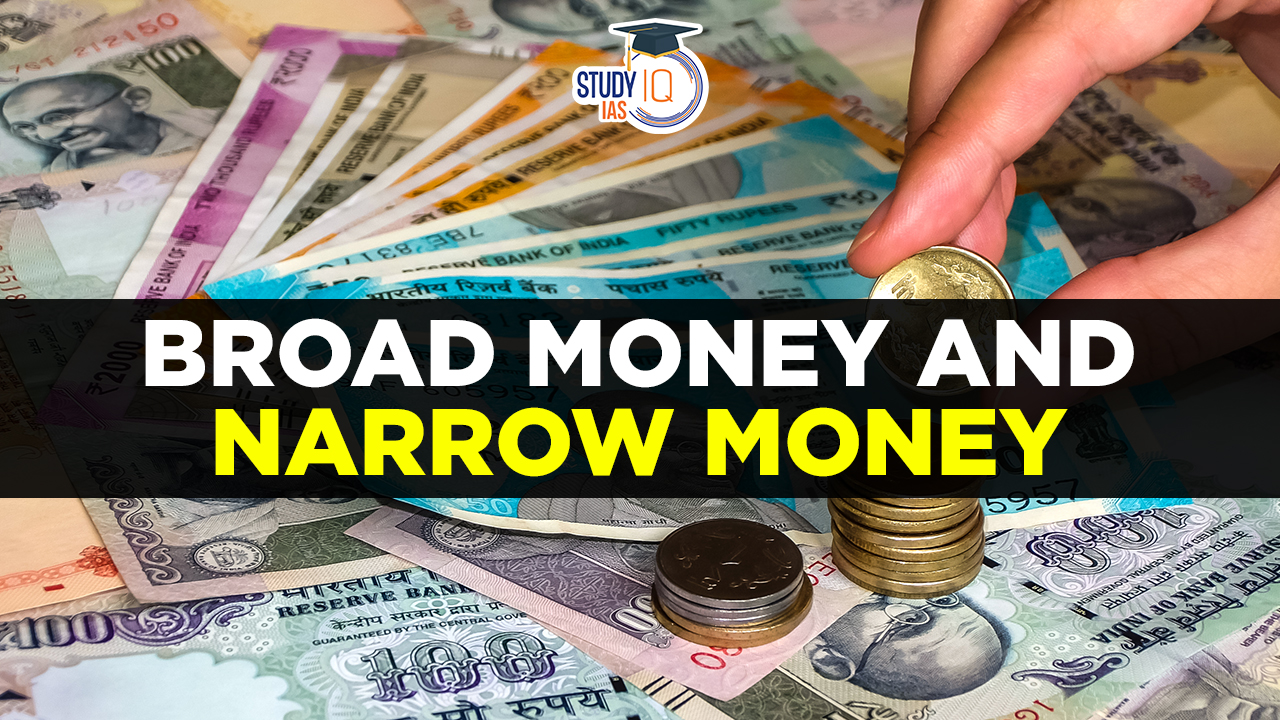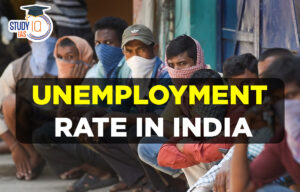Table of Contents
Broad Money and Narrow Money
Broad Money and Narrow Money are two measures of money supply used in economics to capture the different forms of money in an economy. Broad money refers to the total amount of money in circulation, including cash and bank deposits, while narrow money only includes the most liquid forms of money, such as cash and highly liquid bank deposits. These measures are important in analysing the overall health of an economy and for understanding the effectiveness of monetary policy.
Read about: Monetary System
Difference between Broad Money and Narrow Money
Here is a tabulated comparison of Broad Money and Narrow Money:
| Basis of Comparison | Broad Money | Narrow Money |
| Definition | The total amount of money in circulation, including cash and bank deposits, that is easily accessible and usable for transactions. | The most liquid forms of money in circulation, such as cash and highly liquid bank deposits can be used immediately for transactions. |
| Composition | M3 = M1 + time deposits with banks + other deposits with RBI and banks | M1 = currency in circulation + demand deposits with banks + other deposits with RBI and banks |
| Liquidity | High liquidity, as it includes all forms of money in circulation. | Higher liquidity than broad money, as it includes only the most liquid forms of money. |
| Accessibility | Includes all money held by individuals, businesses, and the government, including long-term deposits. | Only includes money that can be accessed and used immediately for transactions. |
| Usefulness | Useful for analyzing the overall health of the economy and for understanding the effectiveness of monetary policy. | Useful for understanding the availability of funds for immediate transactions and for analyzing short-term economic trends. |
Read about: Kuznets Curve
Types of Money
Here’s a table explaining the different monetary aggregates M1, M2, M3, and M4:
| Monetary Aggregate | Components | Description |
| M1 | Currency with the public + Demand deposits with banks + Other deposits with the RBI | M1 is the narrowest monetary aggregate and includes the most liquid forms of money that are readily accessible for transactions. |
| M2 | M1 + Savings deposits with banks + Post office savings deposits | M2 includes all components of M1 and adds other types of deposits that are less liquid but can be easily converted into cash or used for payments. |
| M3 | M1 + M2 + Time deposits with banks + Other deposits with the RBI | M3 includes all components of M2 and adds time deposits with banks, which are less liquid and have a fixed maturity. |
| M4 | M3 + All deposits with post office savings banks | M4 includes all components of M3 and adds all deposits with post office savings banks, which are an important component of the Indian financial system. |
Read about: Green Accounting
Broad Money Supply
Broad money supply refers to the total amount of money in circulation in an economy, including all physical currency, demand deposits, time deposits, and other types of deposits held by commercial banks and other financial institutions.
It is also known as M3 in some countries and includes all the components of M1 and M2 along with additional types of deposits such as savings deposits, certificates of deposit, and other time deposits. The Broad Money supply is a key indicator of the overall level of economic activity in an economy and is closely monitored by central banks and other monetary authorities.
Read about: Phillips Curve
Narrow Money Supply
Narrow money supply, also known as M1, refers to the total amount of physical currency in circulation in an economy, along with demand deposits held by commercial banks and other financial institutions. It includes all the liquid assets that can be used as a medium of exchange, such as cash and checking account balances.
A Narrow Money supply is a key indicator of the level of short-term liquidity in an economy and is closely monitored by central banks and other monetary authorities as it impacts inflation, interest rates, and other important economic indicators.
Read about: International Monetary Fund
Broad Money and Narrow Money UPSC
Knowledge of Broad Money and Narrow Money is important for the UPSC exam as it is a part of the Indian economy and monetary policy. Questions related to these concepts may appear in the UPSC Economics optional paper as well as Paper 3 of the General Studies mains paper, and a good understanding of these concepts can help aspirants score better in the exam. Aspirants can learn more about these concepts through UPSC Online Coaching and UPSC Mock Test.
Read about: Gini Coefficient


 Purchasing Power Parity Index, How to Ca...
Purchasing Power Parity Index, How to Ca...
 Unemployment Rate in India, Current Rate...
Unemployment Rate in India, Current Rate...
 RBI Monetary Policy Committee: Repo Rate...
RBI Monetary Policy Committee: Repo Rate...

























